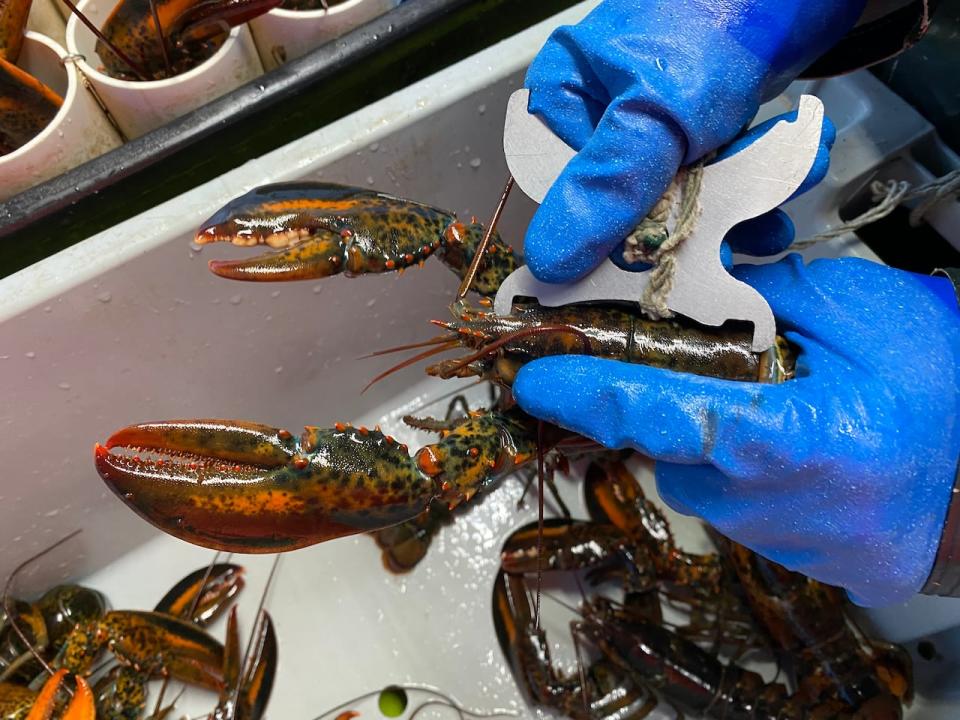Change to minimum U.S. lobster size 'a big jump,' says P.E.I. marketing board

Pending increases in the legal size of lobster that can be sold in the U.S. are something to watch, says the chair of the Lobster Fishers of P.E.I. Marketing Board.
But Charlie McGeoghegan says it likely won't be as much of a problem as some other groups in the Maritimes fear.
Studies of the state of the lobster stock on the Eastern Seaboard have triggered an automatic increase in the size of lobster that can be harvested for the U.S. market. The studies found a decline in the number of young lobster, and the change is designed to give them more time to mature and reproduce.
Currently, U.S. fishermen must throw back any lobster that has a carapace (the hard shell extending from the eyes to the end of the tail) measuring under 82 millimetres. In January 2025, that will increase to 84 millimetres, and it will go up another two millimetres in 2027.
"By 2027, it'll be a big jump from where it is right now, that's for sure," McGeoghegan said.
Legal carapace sizes in the Maritimes vary from as small as 75 to as large as 82.5 millimetres.

Legal carapace size already varies a lot from one jurisdiction to another, says Charlie McGeoghegan. (Jada Yeo)
The change would impact only live shipments for sale in the U.S., but that market was worth $545 million in 2022.
Some mainland fishermen and processors are alarmed by the change, saying it could have an impact on up to 20 per cent of the catch in the Maritimes.
McGeoghegan is not so concerned.
"We'll just have to find markets for that size lobster," he said. "I don't think it's going to be as drastic a change to the market as what some people are saying, but it definitely bears watching, that's for sure."
Moving with the market
The change will likely mean more small lobster will have to be processed instead of sold whole, said McGeoghegan.
It is helpful, he added, that smaller live lobster will still be able to be shipped through the U.S. They just cannot be sold there.

Passengers from the cruise ship Viking Star enjoy some P.E.I. lobster rolls during a visit to Charlottetown in this file photo. Cruise ships are a big buyer of smaller sizes of lobster, says the chair of the Island's lobster marketing board. (Nancy Russell/CBC)
The cruise ship industry, still ramping back up after the COVID-19 pandemic, is a big market for smaller lobster, he said.
Catches are down significantly in the U.S., said McGeoghegan, so he can see the logic in the conservation measure.
That is not an issue off P.E.I. shores, he said, where the stock remains strong.
Those strong stocks, along with rising prices where there is a dwindling supply, bode well for P.E.I.'s spring lobster fishery, said McGeoghegan.


